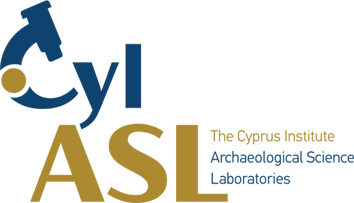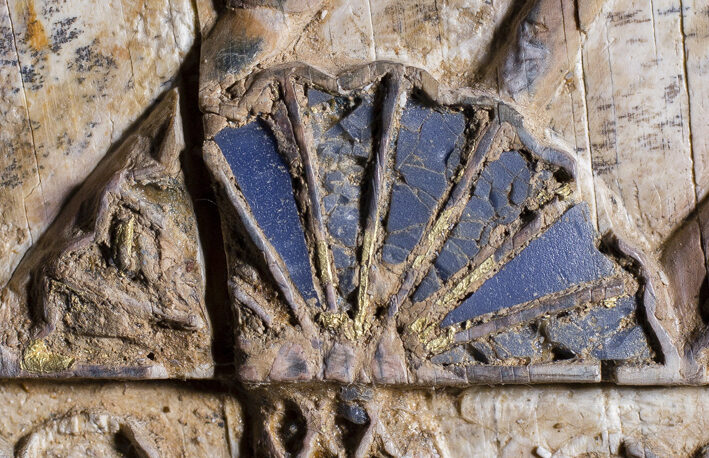Among the many spectacular finds from the Iron Age site of Salamis on the eastern coast of Cyprus are two royal pieces of furniture covered in ivory and inlaid with blue decoration, and now on exhibition at the Cyprus Museum in Nicosia. In a recent study initiated by Professor Vassos Karageorghis, we were able to determine that this decoration is made of cobalt-blue glass, probably of Egyptian origin, similar to the inlays in the contemporaneous Nimrud ivories. The data link the glass from Salamis to the growing corpus of Iron Age Egyptian cobalt-blue mineral natron glass, found from Nimrud in Mesopotamia to Bologna in northern Italy, several sites in southeastern France, and now Cyprus.
The cobalt-blue glass from the late eighth- or early seventh-century BCE wooden bed from Salamis, Cyprus, is compositionally similar to inlays from contemporaneous ivories from Nimrud and numerous early first-millennium beads from northern Italy and southeastern France. Compared with the cobalt-coloured plant-ash-based glass from LBA Egypt and the Aegean, they all have low potash and lime contents (less than 0.5 wt % and about 4 wt % respectively), consistent with Egyptian mineral natron glass from the early first millennium BCE. The compositional similarity with these well-provenanced objects and the characteristic suite of transition metals associated with cobalt ore from the western oases are strong evidence for the ongoing primary production in Egypt of cobalt-blue glass throughout much of the Third Intermediate Period, previously not well recognized.

The study has been published in the Journal of Glass Studies, vol. 62, p. 266-270.
Acknowledgements. We are grateful to the director of the Department of Antiquities, Ministry of Transport, Communications and Works of the Republic of Cyprus, and to the curator of museums, for granting us access to the glass inlays at the Cyprus Museum, and to the Archaeological Research Unit of the University of Cyprus for making its hhXRF instrument available to us. Dr Andreas Charalambous performed the analyses, Ropertos Georgiou produced Figures 1 and 3, and Giusi Sorrentino produced Figure 2. We acknowledge support from Drs. Brunella Santarelli, Iosif Hafez, and Artemios Oikonomou. This research was made possible with the generous support of the A. G. Leventis Foundation.

